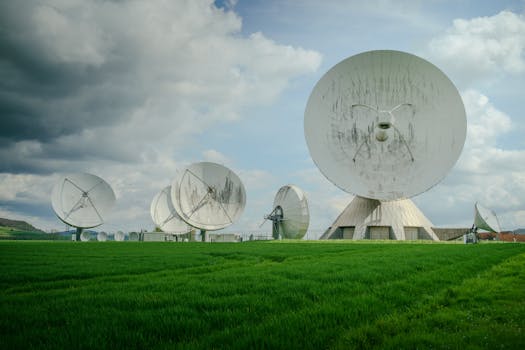
MEO Satellites: The Future of Satellite Communications – MEO Satellites
MEO satellites, or medium earth orbit satellites, are a type of satellite that operates in a medium earth orbit, which is approximately 2,000 to 36,000 kilometers above the earth’s surface. MEO satellites are revolutionizing the field of satellite communications, offering faster and more reliable connections than traditional GEO satellites.
The main advantage of MEO satellites is their ability to provide high-speed, low-latency connections, making them ideal for real-time applications such as video conferencing, online gaming, and cloud computing. MEO satellites also have a wider coverage area than LEO satellites, making them suitable for applications that require global coverage.
How MEO Satellites Work
MEO satellites work by transmitting and receiving signals to and from earth stations, which are located on the ground. The signals are transmitted to the satellite, which then amplifies and re-transmits them back to earth. MEO satellites use a variety of frequencies, including Ka-band, Ku-band, and C-band, to transmit and receive signals.
MEO satellites are typically used for a variety of applications, including broadband internet, mobile communications, and navigation. They are also used for earth observation, weather forecasting, and remote sensing.
Advantages of MEO Satellites
MEO satellites have several advantages over traditional GEO satellites. One of the main advantages is their ability to provide high-speed, low-latency connections. MEO satellites are also more resistant to interference and signal degradation, making them more reliable than GEO satellites.
Another advantage of MEO satellites is their ability to provide global coverage. MEO satellites can cover the entire earth’s surface, making them ideal for applications that require global coverage. They are also more cost-effective than traditional GEO satellites, making them a more attractive option for companies and organizations.
Challenges Facing MEO Satellites
Despite the advantages of MEO satellites, there are several challenges facing the industry. One of the main challenges is the high cost of launching and operating MEO satellites. The cost of launching a MEO satellite can be prohibitively expensive, making it difficult for companies and organizations to invest in the technology.
Another challenge facing MEO satellites is the issue of congestion in the medium earth orbit. As more and more MEO satellites are launched, the risk of congestion and interference increases, making it difficult for satellites to operate effectively.
Finally, there are also regulatory challenges facing the MEO satellite industry. The use of MEO satellites is regulated by international law, and companies and organizations must comply with these regulations in order to operate MEO satellites.
Conclusion
In conclusion, MEO satellites are revolutionizing the field of satellite communications, offering faster and more reliable connections than traditional GEO satellites. While there are challenges facing the industry, the advantages of MEO satellites make them an attractive option for companies and organizations. As the demand for high-speed, low-latency connections continues to grow, the use of MEO satellites is likely to increase, making them a key player in the future of satellite communications.



